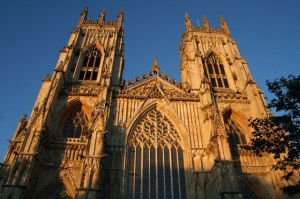Master of both the light and the darkness, send your Holy Spirit upon our preparations for Christmas. We who have so much to do seek quiet spaces to hear your voice each day. We who are anxious over many things look forward to your coming among us. We who are blessed in so many ways long for the complete joy of your kingdom. We whose hearts are heavy seek the joy of your presence. We are your people, walking in darkness, yet seeking the light. To you we say, "Come Lord Jesus." Amen. -Henri Nouwen
“The Nativity Of Our Lord and Savior Jesus Christ” Rublev.
Liturgical Season
Christian worship is fundamentally about union with God. That is, God gives himself to us in worship. And as we receive him- not merely by hearing his word, or making mental assent to a set of doctrines about him, but as we eat and drink him in Holy Eucharist- we are transformed into the image of Christ, unified with God, and brought into the very life of the Trinity! And all of this happens by his grace, mysteriously, every time we gather to sing and praise, pray and preach, confess sin, receive absolution, share in the peace of Christ, and celebrate the sacraments. This is Christian worship!
One of the unique ways the Church has learned to open herself up to the transformation that God offers, is through the observance of different liturgical seasons. Basically, the Church says "Christians, let your worship of God be so pervasive and defining of your identity that even your calendars remind you of the gospel."
I love this! And I find the observance of the liturgical calendar to be one of the most beneficial practices in my relationship with God.
Currently we are in the season of Advent, coming upon the season of Christmastide. Let's use these as examples of how God shapes us in worship. We'll ask: what parts of our human identity will be brought into union with God by Advent and Christmas? I see three ideas here: Advent teaches us to be aware of our existential longings, and to point them in the right direction (toward Christ). And Christmas- Christmas reminds us that union with God is a reality of joy and hope. It is the fulfillment of our human longing! The two liturgical seasons work together in this way.
Advent: Longing
In Advent we set out on a journey. It's a journey of LONGING. In the hymns and collects (prayers), the assigned scripture readings, the greenery around the church, and the progressive lighting of the Advent candles, we rehearse the plight of Israel in the First Testament as they waited for their Messiah to come and rescue them from slavery and oppression. So we sing hymns with lyrics like this:
O Come, O come, Emmanuel, to ransom captive Israel.
Of course, the Messiah did come! And so our longing during Advent is actually directed in large part toward the second coming of Christ! It is a season layered with meaning and truth. This is why sing:
Lo! He comes with clouds descending, Once for favored sinners slain; Thousand thousand saints attending, Swell the triumph of His train: Hallelujah! Hallelujah! Hallelujah! God appears on earth to reign.
Even the colors of Christian worship help us tell the story of the gospel. During Advent you'll see purple and blue vestments and linens around the church. Purple is the color of royalty, but also of lament and repentance (purple is also used during Lent). Blue is used in some churches, and it represents the anticipation of the season, like the deep blue color of the sky, just before dawn. It is also the color of the Blessed Virgin in Christian iconography.
So the colors blue and purple remind us that, in Advent, we are longing and lamenting, waiting with anticipation, making repentant preparations for a Savior-King! We don't have to leave our longings at the door of the church. We can bring them with us to worship, knowing that God desires to meet and fulfill them in his coming.
Henri Nouwen, in his monastic diary, gives us these words about longing: "An important part of the spiritual life is to keep longing, waiting, hoping, expecting. In the long run, some voluntary penance becomes necessary to help us remember that we are not yet fulfilled. A good criticism, a frustrating day, an empty stomach, or tired eyes might help to awaken our expectation and deepen our prayer: Come, Lord Jesus, come. (Henri Nouwen, The Genesee Diary).
Cathedral Church of Saint Luke, Orlando, FL
Christmastide: Joy and Hope
Then? Christmas comes! The blue and purple vestments and linens turn to gold and white, colors of celebration, joy, and light. The dawn from on high has broken upon us! The Church celebrates Christmas not with a single day, but with an entire season called Christmastide- twelve days of reveling in God's coming. This means that, even when the stores take down their decorations on the 26th of December, Christians continue to linger in the joyful mystery of the incarnation. Christmastide is an exuberant and vibrant time of worship as God shapes us into a people characterized by joy and hope.
The emotional uplift that comes with Christmas shouldn't be missed in the sentimentality of the moment. We need to lean into the joy of Christmas just as we did the longing of Advent! In a world as broken as ours, joy and hope are precious realities that can sometimes be covered up in the Advent waiting. Christmas gives voice to the truth, at least once every year, that our ultimate destiny in union with God is joy, hope, and fulfillment.
So my prayer for all of us during this season of Advent and Christmas is that, through the self-giving of God in Christian worship, we may become a people who know our longings, and know the hope and joy that comes with the God who fills them with himself.
- Josh Bales








